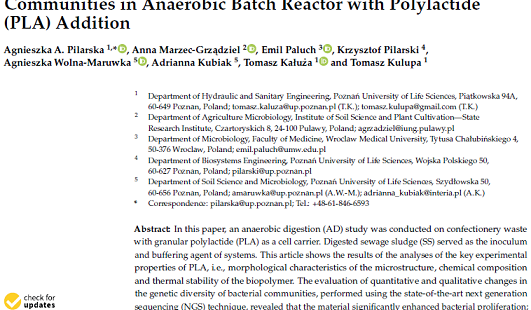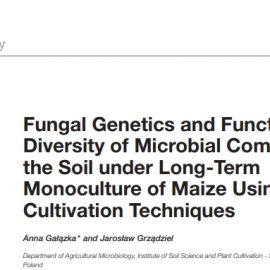In this paper, an anaerobic digestion (AD) study was conducted on confectionery waste with granular polylactide (PLA) as a cell carrier. Digested sewage sludge (SS) served as the inoculum and buffering agent of systems. This article shows the results of the analyses of the key experimental properties of PLA, i.e., morphological characteristics of the microstructure, chemical composition and thermal stability of the biopolymer. The evaluation of quantitative and qualitative changes in the genetic diversity of bacterial communities, performed using the state-of-the-art next generation sequencing (NGS) technique, revealed that the material significantly enhanced bacterial proliferation; however, it does not change microbiome biodiversity, as also confirmed via statistical analysis. More intense microbial proliferation (compared to the control sample, without PLA and not digested, CW–control, CW–confectionery waste) may be indicative of the dual role of the biopolymer—support and medium. Actinobacteria (34.87%) were the most abundant cluster in the CW–control, while the most dominant cluster in digested samples was firmicutes: in the sample without the addition of the carrier (CW–dig.) it was 68.27%, and in the sample with the addition of the carrier (CW + PLA) it was only 26.45%, comparable to the control sample (CW–control)—19.45%. Interestingly, the number of proteobacteria decreased in the CW–dig. sample (17.47%), but increased in the CW + PLA sample (39.82%) compared to the CW–control sample (32.70%). The analysis of biofilm formation dynamics using the BioFlux microfluidic system shows a significantly faster growth of the biofilm surface area for the CW + PLA sample. This information was complemented by observations of the morphological characteristics of the microorganisms using fluorescence microscopy. The images of the CW + PLA sample showed carrier sections covered with microbial consortia.



